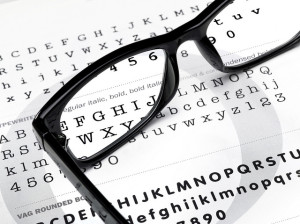What are the Alternatives for Improving Reading Vision?


These days, it seems that the thing most people want in the world is to freeze themselves in time. Do you know a single person who isn’t increasingly worried about the signs of ageing, whether it be the steady emergence of wrinkles, the gradual fade into greyness or even the deterioration of vision?
It is becoming more and more common for people to spend small fortunes on luxury skincare products, cosmetic appointments and even surgical procedures to keep themselves looking as youthful as possible. But while these things can address our hair and skin, what are the options when it comes to reading glasses?
Why do we need reading glasses when we get older?
Throughout your life, you have probably noticed a trend that older people tend to need reading glasses. You may first have noted this in your grandparents and then, before long, your parents might have begrudgingly adopted the readers. Perhaps you’re now at the stage where you’ve introduced a pair of reading glasses, too. But why is this?
No, it’s not some universally recognised rule that, once you reach a certain age, you have to start sporting a pair of glasses at irregular intervals throughout the day. The unfortunate fact is, that as we get older, the finer points of our vision begin to deteriorate. Specifically, our near, reading vision becomes weaker, leaving us requiring assistance for things we used to take for granted.
This phenomenon, which leaves us squinting at menus, straining our eyes when indulging in a novel, and crying out in frustration when trying to read bills, is called presbyopia.
Reading Glasses for Presbyopia
Of course, reading glasses are the most obvious choice when it comes to correcting your reading vision. They can be easily removed when you don’t need them and can be obtained fairly easily, too. But just because they are the most convenient and popular option, hardly means they are the best option.
Given all the obvious downsides of wearing glasses, you may wonder if there are any alternatives. Well, you’re in luck!
Contact Lenses for Presbyopia
Contact lenses have become an incredibly popular choice for the correction of all kinds of refractive errors. Millions of people in the UK have adopted contacts for their myopia (short-sightedness), hyperopia (long-sightedness), astigmatism and – yes! Even presbyopia.
Presbyopic lenses can be bifocal (have two parts – one for distance and one for near vision), monofocal (one eye is corrected for near vision, one eye is corrected for distance vision), and multifocal (have three parts for different depths of vision: near, intermediate, and distance).
Multifocal contact lenses tend to be the most popular option when it comes to correcting presbyopia as they cater to vision of all depths. However, as Mr. Glenn Carp explains in the video below, the downside of these lenses is that some quality of vision is lost. Furthermore, contact lenses generally come with higher risks than other alternatives and carry some cons of their own.
Monovision: The best of both worlds?
As we mentioned above, some people may opt for monofocal contact lenses for their presbyopia. But these aren’t the only option when it comes to monovision.
Monovision is a practice that involves correcting each eye for a different distance. For example, your right eye may be corrected to see better at a distance while your left eye is corrected to see better up close. Aside from contact lenses, this can also be achieved with implantable collamer lenses (ICLs).
In many cases, the brain is able to combine the images from each eye to provide the individual with clear vision across all distances. Unfortunately, this is not guaranteed. It is estimated that only around 60% of patients are able to tolerate monovision, so it is often ruled out in the correction of presbyopia.
So, what about Laser Eye Surgery for presbyopia?
Laser Eye Surgery: PRESBYOND® Laser Blended Vision
Thankfully, there is an option that doesn’t involve the fuss of glasses or contact lenses or the risk of not tolerating monovision. PRESBYOND® Laser Blended Vision is an innovative Laser Eye Surgery technique that allows us to correct your vision for both near and distance vision – and everything in between!
Similarly to monovision, PRESBYOND® involves correcting each eye in a different way. However, this unique treatment actually corrects one brain to see mainly at a distance and a little up close, while the other eye is corrected to see mainly up close and a little at a distance.
This creates a “blend zone” which makes it easier for your brain to combine the two images into one clear picture. As a result, it is estimated that around 97% of people will adapt well to blended vision.
If you have any further questions about PRESBYOND® Laser Blended Vision and other treatments at London Vision Clinic, don’t hesitate to get in touch with one of our friendly clinic coordinators, or Book a Consultation today.

![What are the Alternatives for Improving Reading Vision? [VIDEO]](https://www.londonvisionclinic.com/wp-content/uploads/2013/07/Contacts-v.-glasses.jpg)